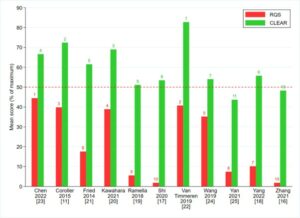Due to the life-threatening nature of chronic pulmonary embolism (CPE) and how easily it can be misdiagnosed on computed tomography, the authors of this study investigated a three-dimensional convolutional neural network (CNN) algorithm for detecting hypoperfusion in CPE from computed tomography pulmonary angiography (CTPA). This study demonstrated the feasibility of a deep learning algorithm for detecting hypoperfusion in CPE from CTPA with overall good performance, resulting in an encouraging outlook for CNNs being used as an automated method to assist clinicians and radiologists in the diagnosis and treatment of patients with CPE.
Key points
- The study aim was to detect hypoperfusion in chronic pulmonary embolism.
- Convolutional neural network was applied to computed tomography pulmonary angiography images.
- Good accuracy with moderate segmentation correlation to manual delineations was achieved.
- The model offered an improvement compared to a computed tomography density-based analysis.
Authors: Tuomas Vainio, Teemu Mäkelä, Sauli Savolainen & Marko Kangasniemi













